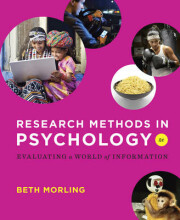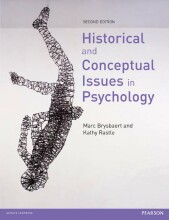Lecture causality - bayesian networks, briganti
15 important questions on Lecture causality - bayesian networks, briganti
What is the most common way of estimating undirected network structures?
To which general class of models do ggm's belong together with ising models for binary data and mixed graphical models for gaussian and binary data mixed?
What is a downside of pairwise markov random fields?
- the causal interpretation of these models is limited: because their edges are undirected, it is impossible to tell whether symptom X is more likely to cause or be caused by symptom Y because edges have no direction and thus cannot encode this information.
- Furthermore, assuming a partial correlation network when the underlying model contains directed edges can lead to spurious causal connections
- Higher grades + faster learning
- Never study anything twice
- 100% sure, 100% understanding
What is an extension of pairwise markov random fields that overcomes their shortcomming?
- Bayesian networks (bn) are derived from causal reasoning by pearl.
- they can ascertain both the direction and the magnitude of causal effects
Which two components are the bayesian networks based on?
- A directed acyclic graph (DAG)
- The role of the DAG is to express the conditional independence relationships between the variables (nodes) by using graphical separation
- if two variables are separated in the DAG by some other variables, they are independent in probability conditional on (that is, after controlling for) those other variables.
- the joint probability distribution of the variables
- the role of the probability distribution is to express the magnitude of the causal effects linking the variables that are not graphically separated.
What assumptions are necessary for for using BN's for causal inference about the variables?
- There is a DAG underlying the data.
- sufficiency, that is, all the causes of a given variable are measured (which means that there are no latent variables and there is no selection bias)
- faithfulness, that is, all the variables that are connected in a given way in the network are probabilistically dependent.
What is the strategy to find a DAG in a BN?
- Finding what DAG underlies the data is done by determining which pairs of variables are dependent, independent, conditionally independent and conditionally dependent.
- d-separation means graphical separation in a graph.
- two variables are d-separated if all possible paths from one variable to the other variable are blocked by another variable.
- it doesn't matter what directions the arrows are in.
What is the markov blanket and what is it's use?
- The markov blanket of node x is the set of nodes that makes node x independent of all other nodes.
- the Markov blanket includes a node’s parents, children, and spouses, that is, children’s other parents.
- The Markov blanket is useful in investigating a target node of interest while ignoring the rest of the BN; all nodes outside of the Markov blanket are independent from the node of interest after controlling for those in the Markov blanket itself
What is the local markov property?
If two nodes are not connected by an edge in a BN, then they are either independent or conditionally independent given some other nodes
What is the global markov property?
In the collider A -> C <- B, which (conditional) (in)dependencies are found?
- A and C are dependent
- B and C are dependent
- A and B are independent
- A and B are dependent conditional on C.
Which probability distributions in bayesian networks are there?
- discrete and ordinal: discrete data
- Gaussian: (multivariate) normal data
- conditional linear Gaussian: mixed data
- These probability distributions satisfy the following requirements:
- First, the structure of the BN should be learned efficiently from data by using statistical tests or goodness-of-fit measures;
- second, the BN should be flexible, that is, distributional assumptions should not be too strict
- third, the BN should be easy to query (retrieve info from) to perform inference
What is a way to assess the stability of a network and to obtain a stable network?
- The creation of the network should be bootstrapped.
- the final network is the network that consists of edges that satisfy the following criteria:
- include edges that occured in 85% of the bootstrapped network and:
- whose direction appeared in more then 50% of the network.
- an edge is stable if it occurs in a lot of bootstrapped network. Due to equivalence, edges can be present in both directions. Pick the direction that is dominant over all bootstrapped networks.
What is the general practice for choosing an algorithm to find your bn?
- Generally, The three classes of algorithms retrieve very similar structures, albeit with some differences in edge directions
- it is therefor recommended to try all three algorithm types to see the robustness of edge directions.
How can you assess the goodness of fit of an obtained bn?
- A network score assigned to specific DAG is not itself useful for assessing the goodness of fit of a single model. It is not defined on a normalized scale: It becomes larger and larger in magnitude as the sample size increases and can become smaller and smaller in magnitude the more values the variables can take. Network scores are only useful to compare different DAGs, which is their task in structure learning.
- Bootstrap resampling and model averaging can reliably assess whether the edges in the BN are reliably supported by the data,
The question on the page originate from the summary of the following study material:
- A unique study and practice tool
- Never study anything twice again
- Get the grades you hope for
- 100% sure, 100% understanding
































